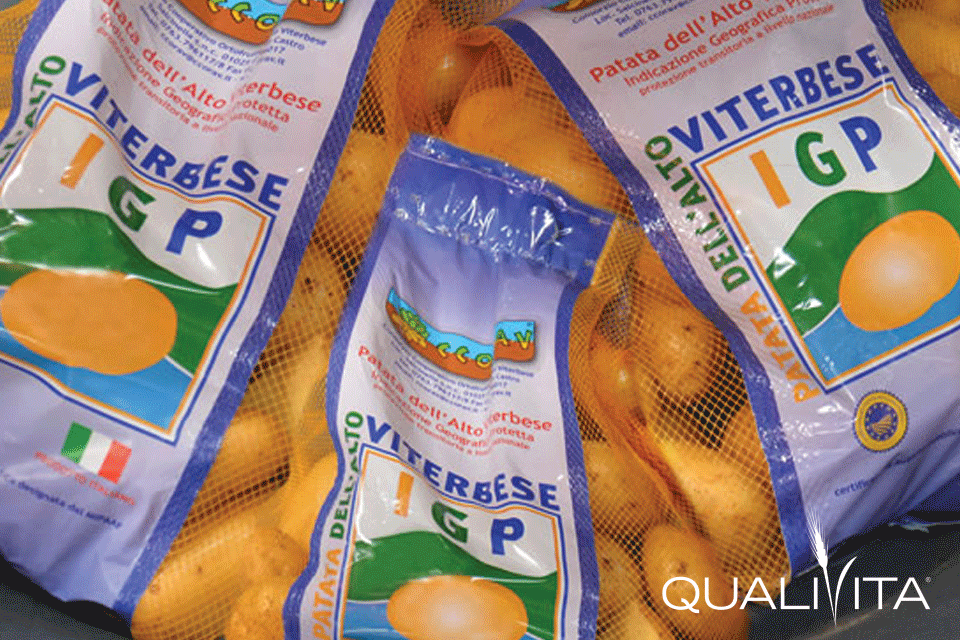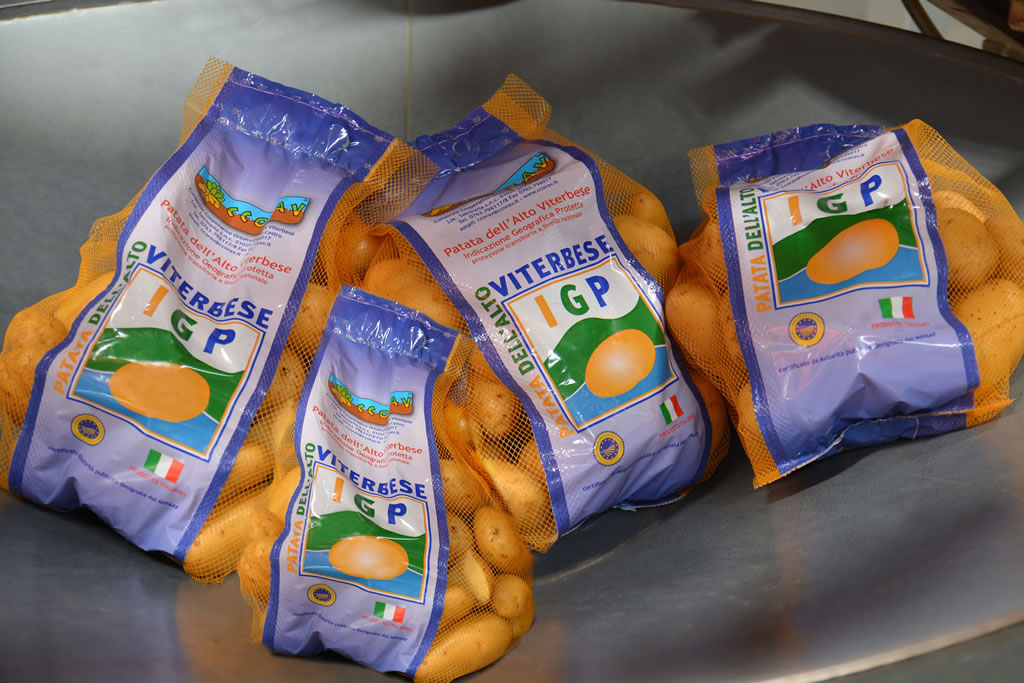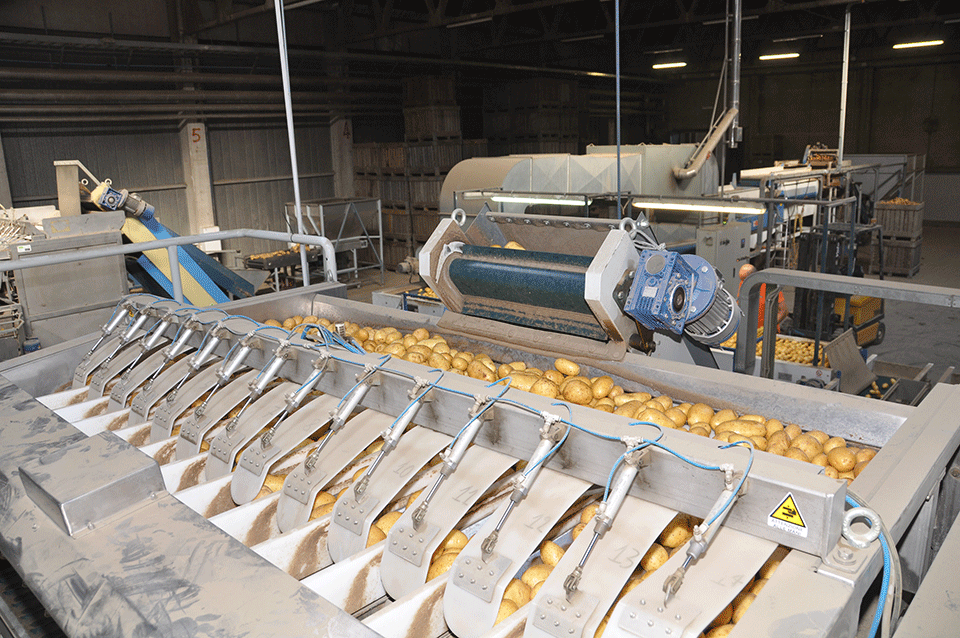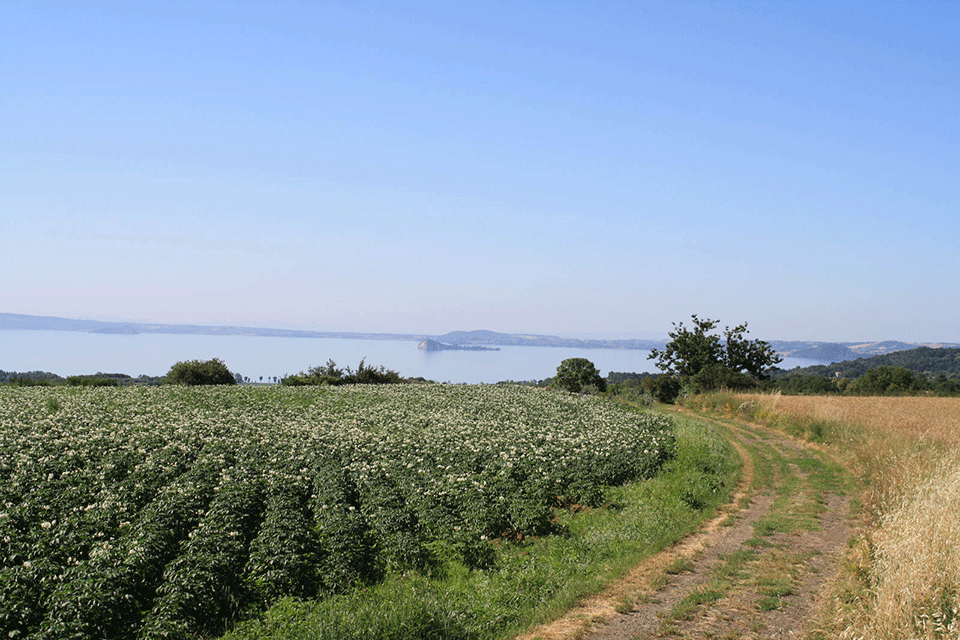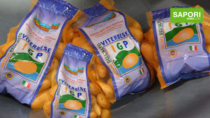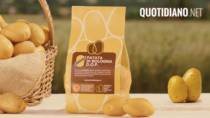Description
The Patata dell’Alto Viterbese PGI refers to the ripe tuber, with a standard elongated, oval shape, yellow pulp and smooth yellow skin, obtained from the species Solanum tuberosum L., of the family Solanaceae, using the seed tubers of potato varieties registered in the common catalogue of varieties of agricultural plant species grown in the production area.
Production Area
The production area of Patata dell’Alto Viterbese PGI is within the municipalities of Acquapendente, Bolsena, Gradoli, Grotte di Castro, Latera, Onano, S. Lorenzo Nuovo, Valentano and Proceno in the Province of Viterbo, in the Lazio region.
Production Method
Certified seed potato must be used to ensure the traceability of the product right from the first stage of production, and if sown whole they must be a minimum size of 65 mm. The soil must be properly prepared before sowing, starting from September-December, by ploughing at least 30 cm deep in order to allow for the adequate penetration of rain, snow and frost during winter. Sowing usually takes place between February 15th and May 15th, while harvesting takes place between June 15th and September 30th. The potatoes can also be subjected to fourth range processing, after having been washed in water, mechanically peeled and sorted. After processing, the product is kept in special cells at a temperature of 3-5 °C while waiting to be dispatched.
Appearance and Flavour
Patata dell’Alto Viterbese PGI has an oval or standard elongated oval shape; it is between 40 and 75 mm long and has a smooth yellow skin, while the pulp is yellow, with the edible part being no less than 97%. The flavour is intense and pleasant, with a moisture level that must be between 75 and 85% and a starch content of no less than 10 g per 100 g of product.
History
Specialised journals, photographs, stories by local authors, and films confirm that the Alto Viterbese potato has been around since the beginning of the twentieth century. Potatoes from northern Viterbo are appreciated both locally and nationwide. Up until the 1960s it was only grown domestically, but following the abandonment of strawberry growing, it extended exponentially into neighbouring areas.
Gastronomy
Fresh Patata dell’Alto Viterbese PGI should be kept in a cool, dry place, ideally in the dark. The packaged Grade IV product should be kept at a temperature of 4 °C and has a shelf life of 8 days. The Amber and Monalisa varieties are suitable for all uses, although they are particularly indicated for oven-baking and making gnocchi; the Agria variety is suitable for deep-frying, thanks to the elevated presence of dry matter; the Agata variety is perfect for steaming and making mashed potatoes and croquettes.
Marketing
The product is marketed as Patata dell’Alto Viterbese PGI. It is available as a both fresh or packaged product, but cannot be sold loose. The fresh product is sold in net bags, vertbags, girsacs, cardboard bags and boxes, sacks, wooden crates, and baskets weighing from 1 to 25 kg. The Grade IV product is sold in transparent food-grade plastic bags, sealed and with a controlled atmosphere, ranging from 500 g to 10 kg; sealed transparent food-grade plastic bags with the product submerged in water, ranging from 500 g to 10 kg.
Distinctive Features
Patata dell’Alto Viterbese PGI owes its distinctive characteristics to the composition of the soil, which is volcanic and rich in potassium, and to the climate of the production area, influenced by Lake Bolsena, which thanks to its mitigating action determines conditions that are particularly favourable for the cultivation of this product.





